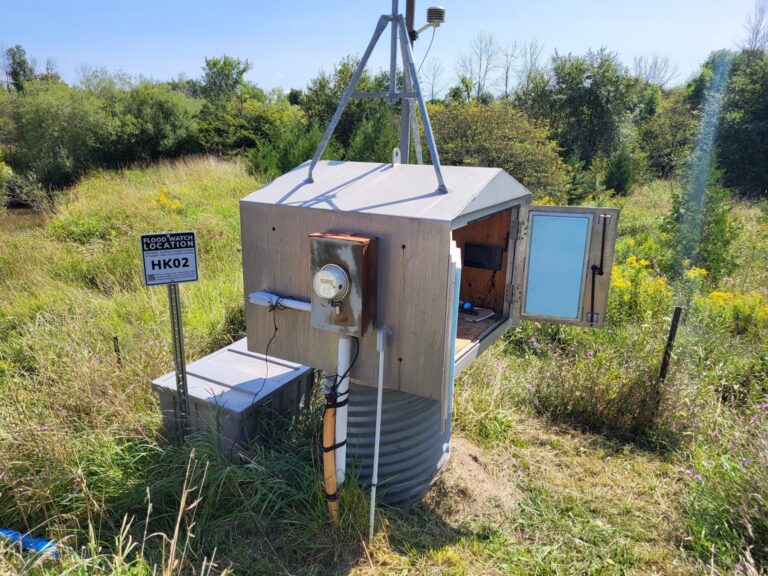If we know how to do a much better job of protecting ecological features and stream systems in our communities and on our landscape, then why aren’t we doing a better job? Why are streams still being degraded? Why do we still see practices that are embedded in land use policy and regulation that are decades old in some cases? How do we change that?
The degradation of stream channels and streamside riparian setback zones have driven the methodology and have established the metrics for EAP, the Ecological Accounting Process. The methodology and metrics focus on the land underlying the natural asset. In the case of stream systems, this is the setback zone defined in B.C. provincial legislation.
EAP produces the financial value of this Natural Commons Asset (NCA) using B.C. Assessment data for parcels which abut the stream system. It is this asset which supports the combined range of uses (package of ecological services) desired and supported by the community—like drainage, habitat, recreation, and enjoyment of property. The NCA financial value alerts communities to the extent of alteration of the riparian features and hydrology of the stream system. This is the Riparian Deficit.
Logically, a stream system is a land use comparable to constructed systems such as drainage, roads, park paths, and greenways, etc. The community expects commons assets to be maintained (prevent degradation) and managed (enhanced). This implied social contract requires planning and budgeting for maintenance and management. This would rightfully fit within a local government’s asset management strategy that deals with the risk and consequences to the community of doing or not doing things.
EAP considers the entirety of the stream corridor system—a “natural commons”—and seeks to ensure that streams survive in an urban or urbanizing setting, without suffering from degradation of stream channels and streamside riparian setback zones. The worth of a creekshed is a package of ecological services made possible by the hydrology.
The term accounting is key to this process because it provides the opportunity to take stock and understand the worth of ecological services as the community uses them. The perceived level of worth reflects community willingness to invest in stream preservation and/or restoration. Holding up this mirror reflects opportunities taken or missed and risks avoided or incurred. Simply put, it asks the question: How well are we doing?
At best, the ecological services provided by green infrastructure have been considered as an add-on. They are not intuitively understood by the public, elected representatives, and asset managers. Unless communities measure the effects of impacts, degradation of riparian assets and streamside setback zones will continue.
The good news is, EAP bridges a gap. It provides local government with a methodology and metrics for integrating natural assets, notably stream corridor systems, into municipal infrastructure. In this way, stream corridor systems can be considered on equal footing with constructed assets (municipal infrastructure) and be included in an annual budget as a line item within a financial plan.
A whole-system approach to the use of green infrastructure would help communities move from stop-gap remediation of problems to long-term restoration of properly functioning stream systems.
5 ways EAP addresses stream system degradation

- What is measured gets managed What happens on the land matters: After all, what is measured gets managed. EAP provides local governments with a guiding philosophy, method, and metrics to determine the financial values for a stream corridor and adjoining setback zone. This is the Natural Commons Asset (NCA) value.
- What is understood can be implemented EAP finds the NCA financial value which quantifies the extent of land use intrusion into the setback zone. A higher dollar value means greater intrusion and reduced riparian area function. This is the environmental equivalent of the infrastructure liability (deficit) for constructed assets, such as underground utilities and buildings. The NCA value provides environmental planners with a starting point for a balanced conversation with engineers and accountants about the services that natural and constructed assets both provide.
- What has worth has value EAP interweaves financial, social, and ecological perspectives within a single number to establish the financial case for a stream corridor system. EAP adds to the conceptual framework for a riparian area maintenance and management strategy with new insights about financial metrics. For example, a price per metre of channel length as a measure of the NCA value, and the community investment in the maintenance and management as a measure of the stream’s worth.
- What is considered can be reconsidered Riparian integrity is more than a regulatory setback width. EAP considers the 200-metre zone beyond the centre of the stream and asks the question: What is the quality of the riparian and woodland vegetation?
- What benefits one can benefit all The EAP methodology focuses on the historical and current land use practices that have changed landscapes, modified hydrology, and have led to present-day community perceptions of the perceived worth of a stream and/or other water assets, and the ecological services those assets provide. The EAP methodology deals with the parcel because this is how communities regulate settlement and growth.
Applied research: Test, refine, and mainstream
The Partnership for Water Sustainability in B.C. is collaborating with multiple local governments in five sub-regions within the Georgia Basin/Salish Sea bioregion, in the southwest corner of the province, to help them determine how to operationalize EAP within an Asset Management Budget.
The EAP program has tested and refined its metrics and methodology through nine projects in Metro Vancouver and on the east coast of Vancouver Island. These are building blocks in a three-stage program to mainstream EAP. In each case, an advisory group collaborates in the process.
The following two examples illustrate EAP as it has been applied to different research questions:
Comox
Brooklyn Creek is a regional environmental amenity and destination in the Town of Comox, a community of 15,000 on Vancouver Island. As the second EAP building block, the project led to four important perspectives or realizations early in the process of testing the EAP methodology. These proved to be foundational ideas going forward as the analytical methodology and description evolved through successive building blocks:
Financial value of a setback zone Using B.C. Assessment Data as a proxy, financial value can be assigned to riparian areas beyond the stream setback zone that are conserved to enhance the stream’s functioning condition.
Stream worth Investment in stream restoration establishes its worth (what the community has invested during, for example, the past decade).
Package of ecological services The community expects the stream to provide a range of uses which contribute to core local government services.
Desired ecological services By managing the stream’s riparian zone, the community can maintain desired ecological services and reduce costly remediation of degraded streams.
The Ecological Accounting Process and findings led the Town to radically change its community plan process for a recently annexed green field area in the Brooklyn creekshed. The planning process began with identification and protection of key riparian assets. The recognition of the asset value of the stream system as a natural commons reversed the traditional approach which would have considered natural areas as a leftover in plans for community expansion.

Langley
The Township of Langley is a community of 140,000 in the Fraser Valley within the Metro Vancouver region. The Township decided to apply EAP to determine a fair method to compensate rural parcel owners who would be willing to commit areas of their land to riparian and woodland maintenance and/or enhancement to support the condition of Bertrand Creek.
EAP is producing a financial strategy based on both urban and rural parcels which abut or are adjacent to the stream. It will reflect the connection of parcel owners to the stream system and its role in supporting intrinsic nature as well as community settlement expectations and realities.
The EAP spotlight is on what is equitable urban/rural mitigation investment. The Township will be able to use the strategy to persuade the community to invest more extensively in incentivizing ecological services.
Looking beyond the stream channel
Whether constructed or natural, an asset is an asset. And in the built environment, each asset type requires an annual budget for sustainable service delivery. The accepted approach to asset management in British Columbia is non-prescriptive, flexible, scalable, and aligns with the spirit and intent of B.C.’s Community Charter, which is enabling legislation. In short, the focus is on outcomes.
All of us have an impact on the land and on the way things look. Getting it right, both in the stream channel and on the land draining to the stream, requires that all the players involved in the land use and development process embrace shared responsibility and align their efforts to achieve desired outcomes.
It is our hope that as EAP is applied and tweaked in these sub-regions by local government managers to influence the on-site actions of property owners, further channel and riparian degradation would be prevented and stream system integrity would be restored.
Kim Stephens, Tim Pringle, and Ray Fung are members of the leadership team for the Partnership for Water Sustainability in British Columbia.
Kim Stephens, Executive Director, is a water resources engineer-planner.
Tim Pringle, founding Director, leads the Ecological Accounting Process initiative.
Ray Fung, Director, retired from local government as a director of engineering.











